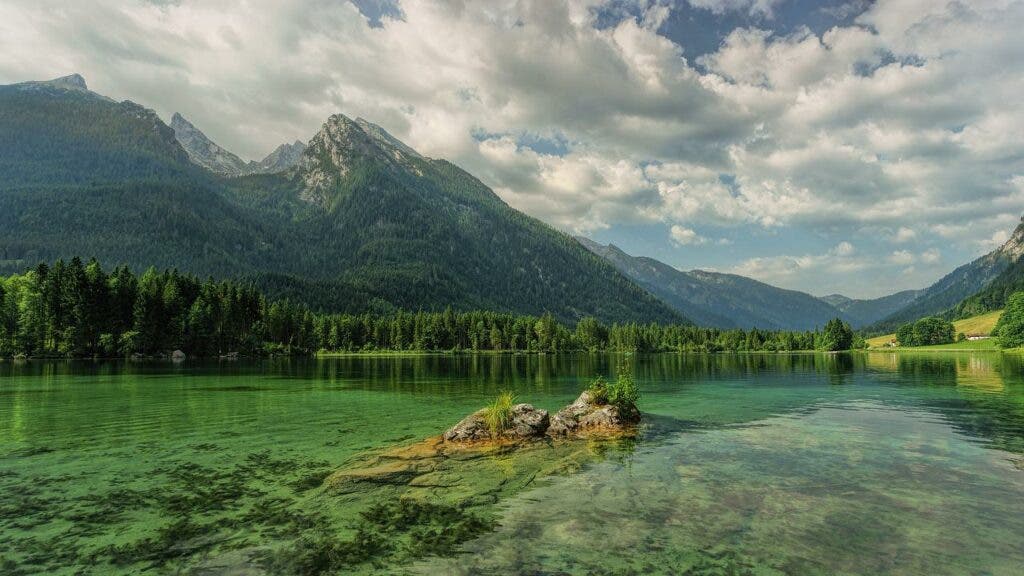In 1960, there were 1.4 hectares of forest for each human; now, there are only 0.5, according to researchers from Japan.

We don’t get to see much of the forest these days, mainly because most of us reading this live in a highly urbanized landscape in towns or cities. But it’s also because there’s less forest to go around, says a team of researchers from the Center for Biodiversity and Climate Change, Forestry and Forest Products Research Institute (FFPRI) in Japan.
They report that over the last 60 years (from 1960 to 2019), forests have shrunk by a net surface area of 81.7 million hectares. While 355.6 million hectares of new forest were added to the surface of the planet over this span of time, 437.3 million hectares were lost.
Forestless
“The continuous loss and degradation of forests affect the integrity of forest ecosystems, reducing their ability to generate and provide essential services and sustain biodiversity. It also impacts the lives of at least 1.6 billion people worldwide, predominantly in developing countries, who depend on forests for various purposes,” the team explains in the paper.
The team was led by Ronald C. Estoque, PhD, an environmental scientist at FFPRI. They drew on global land use data to track the change in global forest cover over the last 6 decades.
They report that forest losses occurred primarily in lower-income countries, especially in the tropics. Forest gains were recorded mostly in high-income countries away from the tropics. These results, they explain, support the forest transition theory: the observation that “as income rises within poor countries, deforestation increases up to a certain point, but then begins to decrease,” according to Dartmouth’s Social-Ecological Systems Meta-Analysis Database.
Before wealthy countries pat themselves on the back for a job well done, it’s important to note that the transition towards higher average socioeconomic standing doesn’t reduce deforestation — it simply exports it elsewhere. Wealthy people can better afford to pay for someone else to cut down their forests, so they do. Poorer areas can’t afford to pass up on the income, so they cut down more of their forests to cover external demand, as well.
“Despite this spatial pattern of forest loss occurring primarily in the less developed countries, the role of more developed nations in this said forest loss also needs to be studied more deeply. With the strengthening of forest conservation in more developed countries, forest loss is displaced to the less developed countries, especially in the tropics,” the paper notes.
Together with the increase in global population over the timeframe studied by the team, this has led to a net decrease in global per capita forest surface by over 60%, the authors report, from 1.4 hectares in 1960 to 0.5 hectares in 2019.
Forests are a linchpin of the natural ecosystems that support human life in a myriad of forms, from providing food and lumber to the recycling of air, water, and the sequestration of climate-warming greenhouse gases. As such, the decline in per capita forest area is deeply worrying, as it means that each one of us will draw on a tinier surface for the water, air, and other services we need as time passes. It also raises the troubling question of just when forests might be overwhelmed and unable to provide for us any longer — just how little forest per human is ‘too little’?
At the same time, the fact that deforestation is concentrated in the tropics magnifies this issue. Tropical forests are the densest type of forest in the world, so one hectare lost here might just be equivalent, in terms of the net amount of environmental services they can provide, to several hectares elsewhere.
Tropical forests are also hotbeds of biodiversity, and widespread deforestation here is bound to cause huge damage to the largest numbers of wild plant and animal species possible. Through the destruction wrought here, we as a species also lose the chance to learn from the various plants and animals that are lost — the tropics have already been a treasure trove of information on how to craft new medicines, for example.
Finally, widespread deforestation is also severely impacting our ability to slow down or stave off climate change. Reforestation, or the planting of trees, is an important component in many states’ roadmap to ‘going green’. And although planting one tree and cutting another is better than just cutting and not replanting, it’s not exactly a step forward, is it?
“Today, monitoring of the world’s forests is an integral part of various global environmental and social initiatives, including the Sustainable Development Goals (SDGs), the Paris Climate Agreement and the Post-2020 Global Biodiversity Framework. To help achieve the goals of these initiatives, there is a profound need to reverse, or at least flatten, the global net forest loss curve by conserving the world’s remaining forests and restoring and rehabilitating degraded forest landscapes,” the authors conclude.
The paper “Spatiotemporal pattern of global forest change over the past 60 years and the forest transition theory” has been published in the journal IOP Science.
Was this helpful?



